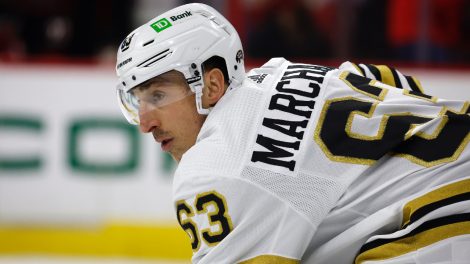Welcome to the Toronto Maple Leafs‘ commoditization era.
If all goes well, there will once again be a time to cheer for blood and guts and the magical elixir of chemistry that comes together when a championship team — OK, a playoff team — becomes more than the sum of its parts.
But that time is a ways off now. The NHL trade deadline came and went with the Leafs getting most of their work done early. The day itself was as dry as the cold, calculated bits of math that preceded it, all designed to yield assets that, in turn, might be flipped for more assets that one day — who knows when — could turn into a hockey player willing to put his body on the line to make a play on the puck in a game that matters.
In the meantime, the Leafs are about flexibility and cap space and prospects and assets. They began moving bodies and contracts six weeks ago and reaped six draft picks and two decent prospects in Connor Carrick and Colin Smith, and they kept their powder dry should they want to do more micromanaging.
‘’I think what we accomplished was not only cleaning the cap problem of today but for the future,” said Leafs general manager Lou Lamoriello of the moves made leading up to the trade deadline, the Dion Phaneuf deal being the centrepiece. “And it gives us the flexibility to do what’s necessary. We certainly have players to sign, we have the ability to acquire players, and we have the ability to sign players. We have the room that’s necessary to do what we need to do.”
The big day itself was quiet in Toronto, as it was almost everywhere else in the NHL. And while the Leafs are determined to flip players for futures, they’re not desperate. As more teams were able to look at where they are in the standings and admit that the playoffs aren’t in the cards this season, the market the Leafs were hoping would develop for the likes of P.A . Parenteau — the pending UFA who leads the Leafs in scoring — never quite materialized.
“There’s been a little separation [in the standings] over the past week or 10 days,” said Lamoriello. “If the standings were a little tighter than they are, you would have seen more teams look at players like P.A. and so forth. A lot of teams were in cap trouble also.”
No worries. The Leafs weren’t caught flat-footed. They had been sending players out the door for weeks, taking on dead money in order to load up on draft picks they can use or package as parts of future deals.
It’s franchise-building through increments. It’s boring and likely time consuming, but it’s long overdue.
This Leafs season and this trade deadline have been in the works for nearly a decade, if you want get technical about it. When Brian Burke was hired as Leafs president in November of 2008, he had two paths to choose from with the aim of rebuilding the Leafs into a playoff team and eventually a championship contender.
In choosing to trade away draft picks and add established NHL players both through free agency and trade, he chose the wrong path. In signing a core that lacked individual or collective accomplishment – not to mention an elite No.1 centre or No.1 defenceman that are the foundation of any ambitious program – he doubled down on his bad judgement. It was evident then that if it didn’t work, it would take the franchise years to dig out from the bad deals, and that’s where we are now: the beginning of the dismantling.
If there is anyone better positioned to build a hockey team through a bloodless technocracy of small deals where people are traded for futures that might be people, it’s Lamariello, who was Burke’s mentor but his opposite in terms of style.
While the divorce from the Burke era had been in the works for months — the separation beginning with the trade that sent Phil Kessel to Pittsburgh last summer — it was finalized on Feb. 9 when Phaneuf was moved.
The Leafs started their work early, shipping out a Shawn Matthias for a fourth-round pick here; a Roman Polak for a second-rounder there. Hey James Reimer, your agent really thinks you deserve a six-year contract for more than $35 million? Hope you keep smiling while riding the pine for San Jose.
Lou’s piece-de-resistance was his deal late Sunday night that sent Daniel Winnik for a second-round pick and a prospect to Washington, facilitated by the Leafs’ willingness and ability to take on the $4.5-million they will owe Brooks Laich next season.
“The thought behind that was simplistic,” said Lamoriello. “We had the opportunity to get a second second-round pick and, in our opinion, an ‘A’ prospect in Carrick. So we had to take a contract back in Brooks.”
It’s smart management, the kind the Leafs have been lacking since the NHL introduced a hard salary cap 12 years ago.
But for now it means following the Leafs is less like cheering for a team than celebrating the steady, bloodless advance of a bond portfolio.
But done right, it may well pay dividends in the form of elite talent, playoffs and champagne — commodities the Leafs have been short on for decades.








